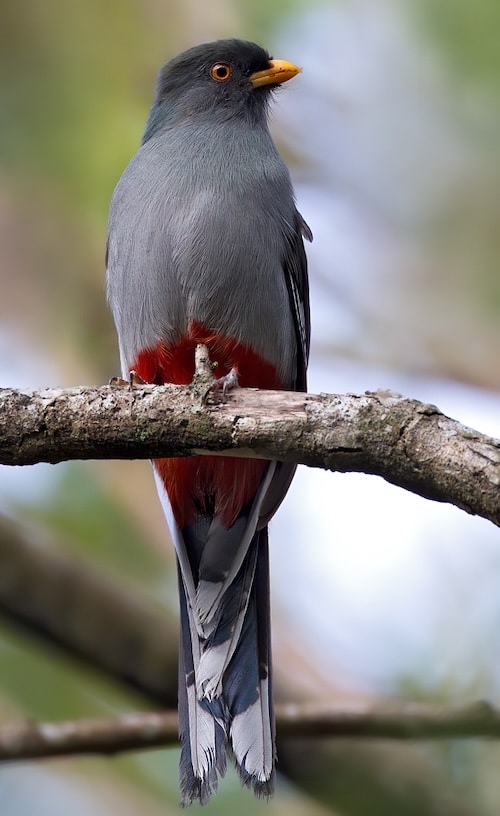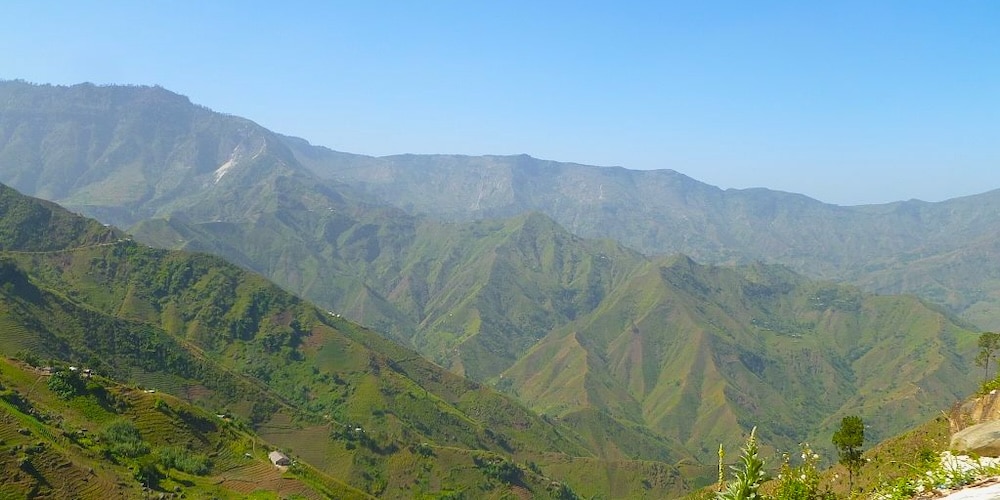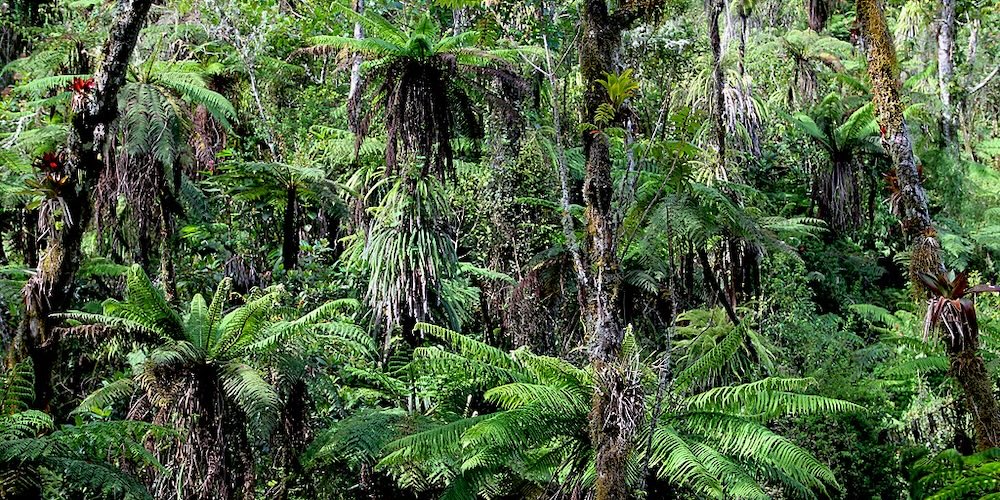Republic of Haiti

Haiti is a country on the island of Hispaniola in the Caribbean Sea, east of Cuba and Jamaica, and south of The Bahamas. It has an area of 27,750 km2 (10,710 square miles) and occupies the western three-eighths of the island, which it shares with the Dominican Republic. Haiti is the third largest country in the Caribbean, and with an estimated population of around 12 million people, is the most populous Caribbean country. The capital and largest city, housing around 25% of the population is Port-au-Prince. Haiti has faced severe economic and political crises, gang activity, and the collapse of its government. With no elected officials remaining, and as one of the world’s least developed countries, Haiti has been described as a failed state (2025).
Haiti’s regional, historical, and ethnolinguistic position is unique for several reasons. It was the first independent nation in the Caribbean, the first post-colonial independent black-led nation in the world, and the only nation whose independence was gained as part of a successful slave rebellion. Haiti is the only predominantly Francophone nation in the Caribbean, and one of only two in North America (along with Canada) which designate French as an official language; the other French-speaking North American countries are all overseas départements or collectivités of France.
The country has a roughly horseshoe shape and because of this it has a disproportionately long coastline 1,771 kilometres long. Haiti is the most mountainous country in the Caribbean, its terrain consists of mountains interspersed with small coastal plains and river valleys. The climate is tropical, with some variation depending on altitude. The highest point is Pic la Selle, at 8,793 feet.

Pic la Selle – ©Alex Carroll CC BY-SA 3.0 via Wikimedia Commons
The northern region or Marien Region consists of the Massif du Nord and the Plaine du Nord. The Massif du Nord is an extension of the Cordillera Central in the Dominican Republic. It begins at Haiti’s eastern border, north of the Guayamouc River, and extends to the northwest through the northern peninsula. The lowlands of the Plaine du Nord lie along the northern border with the Dominican Republic, between the Massif du Nord and the North Atlantic Ocean.
The central region or Artibonite Region consists of two plains and two sets of mountain ranges. The Plateau Central extends along both sides of the Guayamouc River, south of the Massif du Nord. It runs from the southeast to the northwest. To the southwest of the Plateau Central are the Montagnes Noires, whose most northwestern part merges with the Massif du Nord. Haiti’s most important valley in terms of crops is the Plaine de l’Artibonite, which lies between the Montagnes Noires and the Chaîne des Matheux. This region supports the country’s longest river, the Riviere l’Artibonite, which begins in the western region of the Dominican Republic and continues for most of its length through central Haiti, where it then empties into the Golfe de la Gonâve. Also in this valley lies Haiti’s second largest lake, Lac de Péligre, formed as a result of the construction of the Péligre Dam.

Lac de Péligre – Public Domain via Wikimedia Commons
The southern region or Xaragua Region consists of the Plaine du Cul-de-Sac in the southeast and the mountainous Tiburon Peninsula in the south. The Plaine du Cul-de-Sac is a natural depression that harbours the country’s saline lakes, such as Trou Caïman and Haiti’s largest lake, Étang Saumatre both of which are designated Natural Parks. The Chaîne de la Selle mountain range extends from the Massif de la Selle in the east to the Massif de la Hotte in the west.
Haiti also includes several offshore islands. The island of Tortuga is located off the coast of northern Haiti. Haiti’s largest island, Gonâve is moderately populated by rural villagers. Île à Vache is located off the southwest coast; also part of Haiti are the Cayemites, located in the Gulf of Gonâve north of Pestel. Navassa Island, located west of Jérémie on the south west peninsula of Haiti, is subject to an ongoing territorial dispute with the United States, who currently administer the island.
Haiti’s climate is tropical with some variation depending on altitude. Port-au-Prince ranges in January from an average minimum of 23 °C to an average maximum of 31 °C; in July, from 25 to 35 °C. The rainfall pattern is varied, with rain heavier in some of the lowlands and the northern and eastern slopes of the mountains. Haiti’s dry season occurs from November to January. Port-au-Prince receives an average annual rainfall of 54 inches. There are two rainy seasons, April to June and October to November. Haiti is subject to periodic droughts and floods, made more severe by deforestation. Hurricanes are a menace, and the country is also prone to flooding and earthquakes.
Birding Haiti
Most people will not even know that John James Audubon (1785 – 1851) was born in Santa Domingo (now Haiti) to a French naval officer and his Creole mistress. He would surely turn in his grave if he could see the parlous state of the ecology of today’s Haiti – one of the poorest and most environmentally degraded places in the world. The soil erosion released from the upper catchments and deforestation have caused periodic and severe flooding, and mudslides. Haiti’s forests covered 60% of the country as recently as 50 years ago, but that has been halved to a current estimate of 30% tree cover. US and UN Scientists are working on the Haiti Regenerative Initiative, an initiative aiming to reduce poverty and natural disaster vulnerability through ecosystem restoration and sustainable resource management.

Grande Colline National Park – Public Domain via Wikimedia Commons
Haiti is home to four eco-regions: Hispaniolan moist forests, Hispaniolan dry forests, Hispaniolan pine forests, and Greater Antilles mangroves. Despite its small size, Haiti’s mountainous terrain and resultant multiple climatic zones has resulted in a wide variety of plant life. Notable tree species include the breadfruit tree, mango tree, acacia, mahogany, coconut palm, royal palm and West Indian cedar. Most mammal species are not native, having been brought to the island since colonial times. However, there are various native bat species, as well as the endemic Hispaniolan hutia and Hispaniolan solenodon. Reptiles are common, with species such as the rhinoceros iguana, Haitian boa, American crocodile and gecko.
There are over 270 species of birds recorded, 32 of which are endemic to Hispaniola. Notable endemic species include the Hispaniolan Trogon, Hispaniolan Parakeet, Grey-crowned Tanager and the Hispaniolan Amazon. There are also several raptors that are endemic including owls.
-
Trou Caiman
WebsiteSatellite ViewTrou Caiman is a shallow lake close to the capital Port-au-Prince, good for water birds etc…
-
Wikipedia
GNU Free Documentation License
https://en.wikipedia.org/wiki/Haiti
-
Number of bird species: 273
(As at March 2025)National Bird: Hispaniolan Trogon Priotelus roseigaster
Number of endemics: 1
Grey-crowned Palm-Tanager Phaenicophilus poliocephalusNumber of endemics: 33 for Hispaniola as a whole
White-fronted Quail Dove Geotrygon leucometopia
Antillean Piculet Nesoctites micromegas Hispaniolan Woodpecker Melanerpes striatus
Hispaniolan Trogon Priotelus roseigaster
Narrow-billed Tody Todus angustirostris
Broad-billed Tody Todus subulatus
Bay-breasted Cuckoo Hyetornis rufigularis
Hispaniolan Lizard-Cuckoo Saurothera longirostris
Hispaniolan Parakeet Aratinga chloroptera
Hispaniolan Parrot Amazona ventralis
Hispaniolan Emerald Chlorostilbon swainsonii
Ashy-faced Owlet Tyto glaucops
Hispaniolan Nightjar Caprimulgus eckmani
Least Pauraque Siphonorhis brewsteri
Ridgway's Hawk Buteo ridgwayi
Hispaniolan Pewee Contopus hispaniolensis
Hispaniolan Elaenia Elaenia cherriei
Flat-billed Vireo Vireo nanus
White-necked Crow Corvus leucognaphalus
Hispaniolan Palm Crow Corvus palmarum
Golden Swallow Tachycineta euchrysea
Palmchat Dulus dominicus
La Selle's Thrush Turdus swalesi
Antillean Siskin Carduelis dominicensis
Hispaniolan Euphonia Euphonia musica
Green-tailed Warbler Microligea palustris
White-winged Warbler Xenoligea montana
Black-crowned Palm-Tanager Phaenicophilus palmarum
Grey-crowned Palm-Tanager Phaenicophilus poliocephalus
Eastern Chat-Tanager Calyptophilus frugivorus
Western Chat Tanager Calyptophilus tertius
Hispaniolan Crossbill Loxia megaplaga
Hispaniolan Oriole Icterus dominicensis
-
Avibase
PDF ChecklistBirdlife Logo This checklist includes all bird species found in Haiti , based on the best information available at this time. It is based on a wide variety of sources that I collated over many years. I am pleased to offer these checklists as a service to birdwatchers. If you find any error, please do not hesitate to report them. -
E-Bird
PDF ChecklistThis checklist is generated with data from eBird (ebird.org), a global database of bird sightings from birders like you. If you enjoy this checklist, please consider contributing your sightings to eBird. It is 100% free to take part, and your observations will help support birders, researchers, and conservationists worldwide. -
Wikipedia
Annotated ListThe following is a list of the bird species recorded in Haiti. The avifauna of Haiti included a total of 275 species according to Bird Checklists of the World (Avibase) as of October 2024
-
A Birdwatcher’s Guide to Cuba, Jamaica, Hispaniola, Puerto Rico & the Caymans
| By Guy Kirwan, Arturo Kirkconnell & Mike Flieg | Prion | 2010 | Paperback | 198 pages, Line illustrations, maps | ISBN: 9781871104127 Buy this book from NHBS.com -
Field Guide to the Birds of the Dominican Republic and Haiti
| By Steven Latta, Christopher Rimmer, & Kent McFarland | PUP | 2022 | Edition 2 | Paperback | 228 pages, 57 colour plates, b/w distribution maps | ISBN: 9780691232393 Buy this book from NHBS.com -
Ruta Barrancolí
| A Bird-Finding Guide to the Dominican Republic | By Steven C Latta, Kate J Wallace, Dana Gardner & Dax Román E | National Aviary, USA | Dec 2012 | Paperback | 241 pages, 32 plates with colour illustrations; colour photos, 33 colour maps | Out of Print | ISBN: 9780615625683 Buy this book from NHBS.com -
The Birds of Hispaniola
| (Haiti and the Dominican Republic) | By Allan R Keith, James W Wiley, Steven Latta & Jose Ottenwalder | British Ornithologists' Union | 2003 | Hardback | 309 pages, 32 pp col photos, tabs, figs, plates | Out of Print | ISBN: 9780907446262 Buy this book from NHBS.com -
The Birds of the West Indies
| By Guy M Kirwan, Anthony Levesque, Mark W Oberle & Christopher J Sharpe | Lynx Edicions | 2019 | 400 pages, 1600+ colour illustrations, 650+ colour distribution maps | ISBN: 9788416728176 Buy this book from NHBS.com

Birds of the West Indies
AndroidThis bilingual, mobile field guide for the West Indies includes all 415 bird species of Puerto Rico and the northeastern Lesser Antilles: Virgin Islands, Anguilla, Saint Martin (Sint Maarten), Antigua and Barbuda, Montserrat, Sint Eustatius, Saint Kitts and Nevis, Saint Barthélemy (St. Barts), and Saba.
Birds of the West Indies
Apple iOS |Explore the vibrant Caribbean islands with Birds of the West Indies – your pocket guide to Caribbean birdwatching!Useful Information-
BirdLife
InformationHaiti - BirdLife DataZone
Organisations-
Haiti National Trust
WebsiteHaiti Trust was created to protect the environment and biodiversity of Haiti for future generations. Our primary activity is to identify the biodiversity hotspots of Haiti, acquire land for parks, and establish long-term protective measures. -
Hispaniolan Ornithological Society
WebsiteSOH Conservacion es una organización ambiental sin fines de lucro dedicada a la conservación de especies en peligro y sus hábitats en la isla de Hispaniola. -
Société Audubon Haiti (SAH)
WebsiteOur mission is to conserve the biodiversity and natural ecosystems of Haiti through research, education, outreach and national/international partnerships. Société Audubon Haiti is focused on helping Haitian citizens improve their quality of life by restoring the Haitian environment
Reserves-
*List of protected areas of Haiti
InformationSatellite ViewInteractive list of national parks, marine reserves etc. -
NP Deux Mamelles
InformationSatellite ViewIt is located on the Tiburon Peninsula of Haiti, just west of a line connecting Les Anglais to the south and Jérémie to the north. The park circumscribes a U-shaped mountain, Morne Deux Mamelles, reaching 1,276 meters in elevation and is the highest mountain at the western end of the Tiburon Peninsula. -
NP Grand Bois
InformationSatellite ViewMorne Grand Bois is an isolated bowl-shaped mountain with remnant original (primary) rainforest. Its highest peak is 1262 meters in elevation. On Grand Bois, they rediscovered a frog species that was believed to be extinct, the Tiburon stream frog (Eleutherodactylus semipalmatus). A rare Magnolia tree species, Magnolia ekmanii, which has not been seen since Ekman's exploration, was also found. -
NP Grande Colline
InformationSatellite ViewThis park is one of the most remote and difficult to reach areas in Haiti. It was explored by the founders of the Haiti National Trust in 2011–2015, with assistance of a helicopter and supported by the National Science Foundation and Critical Ecosystem Partnership Fund. -
NP La Visite
InformationSatellite ViewThe park offers excellent opportunities for birdwatching. The park is home to over 80 species of birds. A number of threatened species, including some endemic to the island of Hispaniola, can be seen in the park. -
NP Lake Azuéi National Park
InformationSatellite ViewThe lake itself is part of a chain of nearby saline lakes that lie within the valley known as the Cul-de-Sac Depression in Haiti and the Hoya de Enriquillo in the Dominican Republic. -
NP Parc National La Visite
InformationSatellite ViewSatellite View -
NP Pic Macaya
InformationSatellite ViewThe forest is also home to 65 species of birds, several threatened with extinction.
Trip Reports-
2014 [04 April] - Rick Schaefer
PDF Report...There had just been a rain shower, cloud cover kept the temperature mild, and birds were active. Wewalked to the edge of a line of trees near the house and within a few minutes spotted a Grey-crownedPalm-Tanager in one of the trees. Shortly thereafter a second one appeared. We figured the species must at least be fairly common since the habitat we found these birds in was abundant. We were at this location for only 15 minutes. Other birds seen here were Palmchat, Black-andWhiteWarbler, and several Scaly-naped Pigeons perched in trees across the road...
Places to Stay-
Visit Haiti
InformationThis site is in French
Other Links-
Haiti and the destruction of nature
WebsiteHas anyone documented the rate of extinction of our bird species?, asks Guy Antoine in one of his discussions on the ecological concerns about Haiti. Most of the birds in Haiti have migrated to the Dominican Republic. The Haitian peasants cross the border so do the birds. Why? Deforestation, no green (vegetation) and poor agriculture
Fatbirder - linking birders worldwide...
Skip to content
